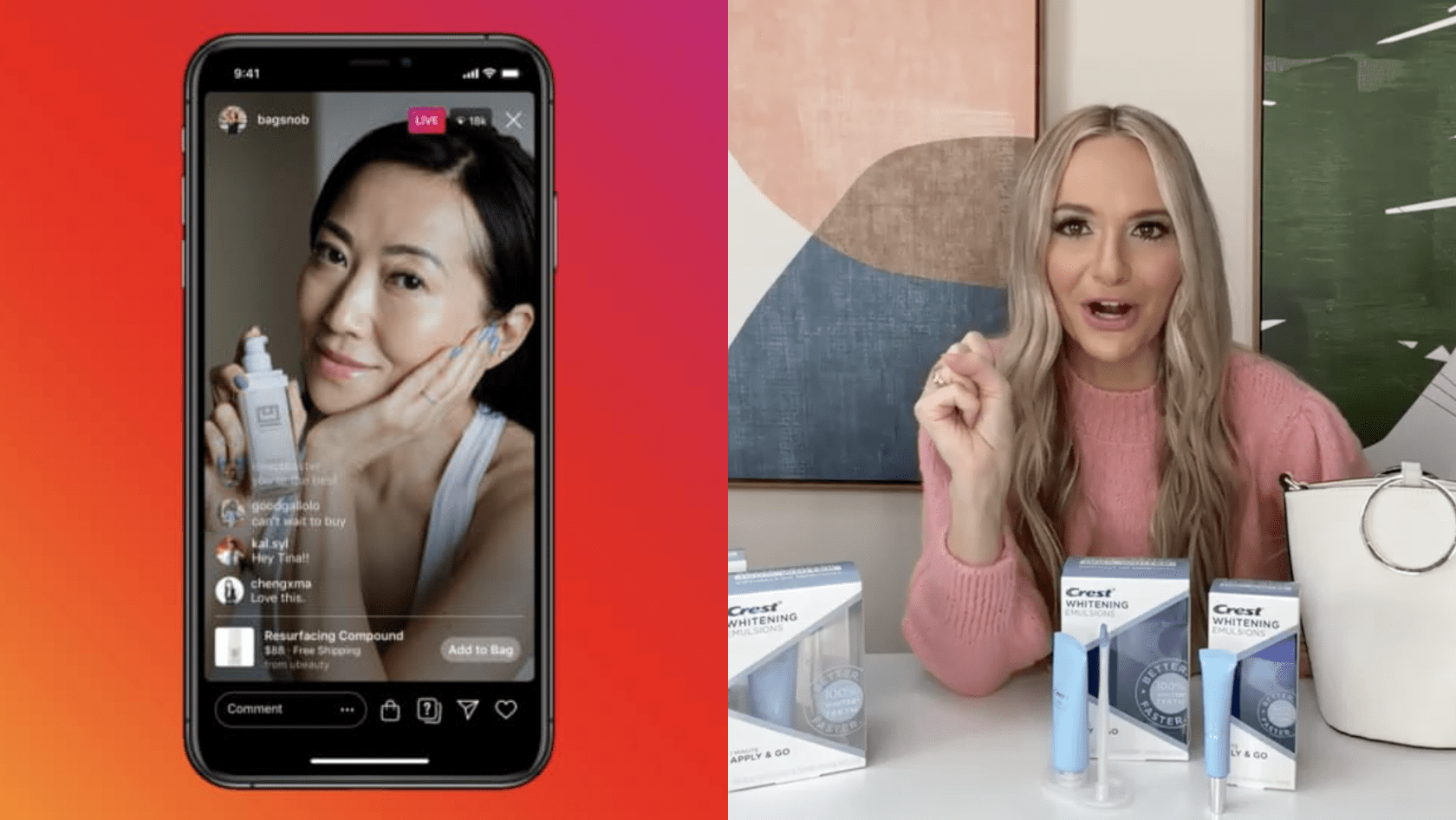Twenty years ago, online shopping transformed retail; today, live streaming is poised to shape e-commerce. “Live commerce” is a term applied to the partnering of streaming video and shopping. Read on to learn more about the concept dubbed “QVC for the digital age.”
What Is Live Commerce?
The QVC analogy is an apt one. Back in the 1980s, home shopping network QVC expanded shopper reach by connecting with consumers in their homes. Television was the medium; suddenly, shoppers could browse and buy in the middle of the night, from the comfort of a favorite living room chair. With live commerce, consumers can still make purchases from their homes, but the fusing of online retail with live streaming brings shoppers even closer to the energy of an in-person experience. Live commerce can take different forms:
- Online marketplaces. Marketplaces like eBay have traditionally allowed users to buy and sell online. These same marketplaces are now responding to consumer behavior by incorporating live streaming into their platforms. The real-time interactivity replaces static exchanges with the energy and experience of actually “being” in a marketplace.
- Live auctions. Live video streaming gives auction houses an opportunity to bring bidders from all around the world into the saleroom. The benefit? An institution like Sotheby’s can reach a broader audience with widely varied interests.
- Influencer streaming. Using live streaming, influencers can leverage their personal brand to promote their favorite products in an interactive format. While influencer streaming got its start on social media, the practice is now common across e-commerce sites, as well. (Brands targeting Gen Z take note: influencers especially resonate with the Gen Z generation. According to Wowza, 44 percent of that demographic make purchase decisions based on social influencers’ recommendations.)
- Live events. Events like product launches, limited edition drops, and retail holidays such as Black Friday are well suited to shoppable live broadcasts.
Why Is Live Commerce Popular Now?
Before 2020, online commerce was already gaining traction. Then the pandemic hit. According to IBM’s U.S. Retail Index, COVID-19 hastened the shift from shopping at brick-and-mortar stores to digital shopping by approximately five years. And home shopping channels like QVC, which had already started exploring on-demand video shopping prior to 2020, enjoyed a surge of popularity with Americans staying home because of COVID-19. Econsultancy reports that between March and May of 2020, viewership for networks like Home Shopping Network and QVC rose 10 percent.
The interactive nature of live commerce has made it particularly resonant during the pandemic. People are social beasts. They crave connection. During COVID-19 lockdowns, when social interaction has been limited, being able to ask questions about a product or directly interact with an influencer online helps fill that need to connect.
Who Is Embracing Live Commerce?
Live commerce is a huge market in China; according to a survey by AlixPartners, reported in November 2020, two-thirds of Chinese consumers say they made purchases via livestreaming in the previous 12 months. But United States brands are also getting on board:
- An early adopter of livestream shopping in the US, Levi Strauss reached out to consumers afraid to visit brick-and-mortar stores during the pandemic. Shoppers could ask questions—and make purchases—during 30-minute to one-hour sessions devoted to featured products and tips.
- Walmart and TikTok recently worked together on a livestreamed shopping event. During the “Holiday Shop-Along Spectacular,” TikTok creators like Michael Le showed off their favorite Walmart fashions on Walmart’s TikTok profile, and shoppers could buy the same products using mobile checkout.
How Should Brands Be Involved?
Live commerce can help brands connect with consumers in meaningful ways, even when physical contact is limited. Interested in experimenting with what live commerce can do for you? We recommend that you:
- Do your research before working with an influencer. Find the right match for your brand. Does it make sense to work with a superstar? It can be more economical to work with micro-influencers who draw a strong following from a geographical region or niche industry relevant to your brand. (According to Econsultancy, micro-influencers can also generate higher levels of trust and authenticity.)
- Pay attention to the “commerce” part of live commerce. Does your checkout process run seamlessly? Make sure it does before unrolling a live commerce campaign.
- Continue to make customer experience a priority, even after checkout, even from afar. Live commerce can never exactly re-create the in-store shopping experience, but taking shoppers’ needs into consideration goes a long way towards building customer satisfaction—and brand loyalty. Zappos, an early e-commerce adopter, is an instructive example. By encouraging customers to order multiple sizes of an item, then making it not only easy, but free to return anything that didn’t fit, Zappos built satisfaction and encouraged return visits.
Contact True Interactive
Want to learn more about live commerce—and how digital can elevate your brand? Contact us. We can help.
